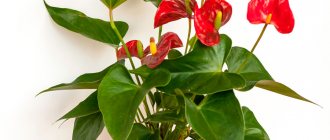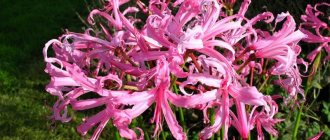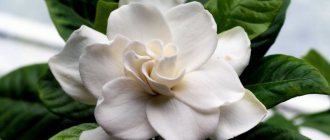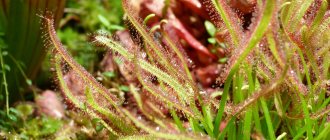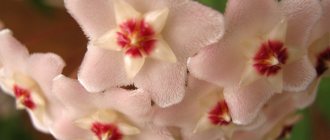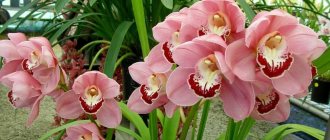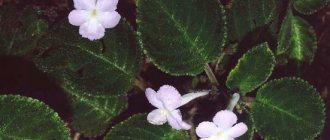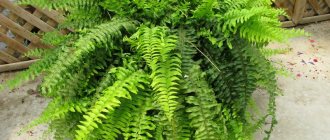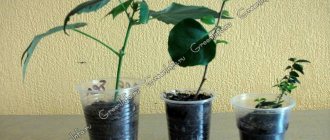If you want to create a tropical corner at home, get an areca palm tree.
This completely domesticated species has, however, retained all its most beautiful features and will give your home a special appeal. And areca is not only beautiful, but also healthy! Its leaves can neutralize up to 85% of air pollution, absorbing carbon monoxide and other toxic substances.
Botanical description
Areca belongs to the Palm family, the type species is areca catechu, or betel palm . The genus includes several dozen species, but areca is one of the largest. It is found in tropical parts of Asia, saturated with moisture: from the Solomon Islands, New Guinea and the Philippines, to Sri Lanka and India.
Areca is grown throughout the tropical zone and is often used in veterinary medicine as a laxative and can quickly drive away worms in ungulates and relieve pain from rheumatism. The alkaloid arecoline helps reduce intraocular pressure and is used in official medicine.
The palm tree can be either dwarf (up to 40 centimeters) or a real giant and stretch up to 20 meters in height.
It is distinguished by a thin stem, which is covered with ring-shaped scars. The foliage is dense and feather-like in bright green. Inflorescence-cobs are formed below the crown. The size of the cobs is slightly less than a meter. Flowers are medium sized, white . The fruits are egg-shaped drupes of a reddish-yellow hue. The seeds are small, horn-shaped, white-pink.
The palm tree grows surprisingly quickly: it reaches its maximum in just 3-4 years.
Varieties and photos
Below are photos, names and descriptions of areca varieties suitable for propagation and care at home.
Catechu (Areca catechu)
The homeland of Areca Katehu is the Malay Archipelago and the Malacca Peninsula. The maximum height of the trunk is 25 meters, while in diameter it is surprisingly thin - from 12 to 20 centimeters. It is considered one of the largest representatives of the genus. The leaf blades are pinnate, curved, arched . Their tips are pointed, and the venation is clearly visible on the leaf. Leaf width – 2-3 cm, length – 30-60 cm.
The root system is branched, the roots are numerous and extend from the base of the stem in all directions. Pistillate and staminate flowers (i.e., male and female) grow on the same plant. The flowers are white and smell nice. The fruit is a drupe, “betel nut”. Catechu is a highly toxic and extremely poisonous houseplant. The photo below shows Areca Kateju:
Three-stamen (Areca triandra)
This species is native to the Malacca Peninsula. The trunk extends up to 3, less often – 5 meters. But it should be noted that there can be several trunks. Scars are present on the bark. The leaves are long and slightly drooping in appearance, up to half a meter long. The flowers are fragrant, milky white. Fruit length – 25 mm. You can see what the Areca Trekhtychinkovaya variety looks like in the photo below:
Yellowing (Areca lutescens)
Also Chrysalidocarpus is yellowing, Dipsis is yellowing. This bushy palm grows in Madagascar. It reaches a height of 6-10 meters, but only in natural conditions. A domestic specimen will not grow higher than 2 meters . Both leaf petioles and trunks are colored yellowish with small brown specks. The bark is smooth.
The leaves are arched, hard and very strong, 2 cm wide. The petiole is at least 50 cm, covered with dark scales. There are 20 species of Areca chrysalidocarpus, the most famous being three-stamen, Madagascar and yellowish. In the photo below is the Areca Yellow variety:
Care
Lighting
Areca grows well in partial shade, but exposure to direct sunlight has a negative effect on its appearance. In any case, from May to July from 12 to 15.00 pm. Provide sufficient shading. If the areca grows indoors, give it a place near the eastern window - the sun will look there in the early morning and illuminate the palm tree very carefully.
For the winter, move it to the south window - this is where the sun will stay the longest. In summer, on fine days, the palm tree can be taken out onto an open balcony or into the garden. But you shouldn’t place a pot with a plant near heating appliances.
The pot with the palm tree should be turned to the light, first on one side, then on the other: every two weeks by 180 degrees. This will help the plant not to sag.
Temperature
The ideal room for the areca palm is warm and humid. It is not surprising: in natural conditions, the palm tree chooses the same places for development. The plant can easily tolerate 30-degree heat, but it is best to stick to values from +18 to +25 degrees. Please note that a decrease in temperature to +16 and an increase to +35 degrees is allowed for a short time (2-3 days). Otherwise, the plant will die.
Humidity and watering
The palm tree is accustomed to high air humidity and requires the same in the apartment. You will need to create the appropriate atmosphere. Cover hot radiators with damp towels, and place a saucer with sphagnum moss near the pot with a palm tree and spray it regularly. You can simplify your task and purchase a household humidifier. Do not forget to spray the plant with water several times a week.
Areca loves moist soil, but it should not be flooded, otherwise root rot will appear. In both spring and summer, check the humidity level like this: dip your finger into the ground. If it has dried by 2-3 cm, go get water.
Drain excess water from the pan immediately, without allowing it to stagnate.
Special mention should be made about water. Substituting a watering can under the water tap, of course, is as easy as shelling pears, but such water will not bring any benefit to your green pets - only harm. It contains too much chlorine, salts and other harmful substances. It is also better not to use rainwater. Purify the liquid using a special filter , settle it, or buy distilled liquid in the store. To soften, add a little lemon juice or citric acid. And be sure to warm the liquid to room temperature.
Areca does not tolerate drafts, so when planning to ventilate the room, take your indoor plant to another room.
Trimming
Trimming will help give your palm a nicer appearance and remove broken and dead leaves, but you will have to wait until the petiole of each leaf is completely dry. It is advisable to also cut off the side shoots so that they do not take away the strength from the main stem. But do not touch the leaves that have just begun to turn yellow: they serve as a source of additional nutrition for the areca.
Use a sharp blade that has been disinfected with alcohol . Garden shears can damage the leaf blade.
Top dressing
Areca is fed with special mineral complexes for palm trees. Fertilizers are applied from mid-spring to August (inclusive). 2 times a month. In addition, pamper the palm tree with solutions of microelements during the period of active growth.
Transfer
The roots of the palm tree grow quickly and sooner or later they will begin to hang down from the drainage holes.
At this time you will need to start replanting. In young plants this happens within a year; in adults, replanting should be done once every 3 years. If the palm tree is tall and massive, it will be enough to change the top layer of substrate (5 centimeters thick). The right time for replanting is April , as soon as the growing season begins.
Soil preparation is an important step. Here you need to navigate depending on the individual needs of each plant. Areca loves neutral or acidic soil with a pH of 6.0-7.8, capable of quickly draining water. If the liquid drains for several minutes, this soil is not suitable.
High-quality drainage is ensured by the following components: pebbles, perlite, pumice, coarse sand, wood chips, coarse peat, granite.
Soil mixture recipe : 1 part slag (or pumice), 1 part pine bark, 1 part perlite, 1 part pebbles with crushed stone, 2 parts peat (rough), 1 part charcoal and 0.1 part bone meal.
Do not use components that quickly lose their structure - they contribute to “waterlogging” of the soil.
Illumination
Caring for areca requires good lighting. She loves bright sunlight. The plant should be shaded from direct sunlight only on hot summer days, when the sun is especially hot. Young bushes do not like direct sunlight and should be protected. The plant grows well in almost any light, so it can be placed either near a window facing south or north. To develop a symmetrical crown, it is necessary to rotate the pot with the bush 180 degrees once every half month.
Reproduction
From seeds
- Soak areca seeds in sulfuric acid solution for 10 minutes.
- Sow in light soil under film.
- The germination time of seeds is one and a half to two months at a temperature of +27-30 degrees.
Dividing the bush
- Remove the bush from the pot and remove the soil from the roots.
- Divide the plants, being careful not to damage the roots. Do this quickly so that the root system does not dry out.
- Plant the cuttings in the mixture: 2 parts leaf humus (no need to sift it), 2 parts perlite and 1 part turf soil. Water it.
- Grow the cuttings at a temperature of +20-25 degrees in partial shade. Protect plants from drafts and maintain high humidity in the room.
- The rooting period will take a couple of weeks. If the palm leaf has become elastic, everything went well.
- Feed the areca, but reduce the concentration by half.
Humidity
Normal room humidity is quite suitable for the areca flower. In cold weather, problems may arise when the heating is running. The air becomes drier, which can lead to a deterioration in the decorative qualities of the palm tree. Leaves may begin to shrink and their tips may dry out. Moistening the bush with a spray bottle will help maintain the required level of humidity in the room.
Diseases and pests
- What to do if the areca leaves dry out, begin to curl and die? The palm tree suffers from excess sunlight. This is especially true for plants under six years old - their leaves are not as resistant to ultraviolet radiation as those of more mature plants.
- A low level of humidity reduces the decorative value of palm leaves: they lose their elasticity and rigidity, dry out, and decrease in size.
- With magnesium deficiency, a wide yellow stripe appears along the edges of the leaf blade. With a lack of potassium, yellow and orange spots appear on the leaves, the veins turn yellow, and over time, necrosis of the edges occurs.
- If the plant has stopped growing and the color of the leaf blades has changed to light green, the palm tree does not have enough nitrogen. Necrotic spots appear with a lack of zinc, and chlorosis - with a deficiency of manganese.
Areca pests : euonymus scale insect, mealybug.
- Scale insects settle in leaf axils and other hard-to-reach places. Remove adults using a soft cotton swab soaked in alcohol (from the leaves) and a toothbrush (from the axils and trunks). Folk remedies against scale insects help little, so immediately use special preparations: “Aktara”, “Calypso”, “Confidor”.
- The mealybug also hides in the axils, but prefers to lay eggs on the youngest and juiciest leaves. The clutches look like tiny lumps of cotton wool. The insect sucks the juice from the stems, leaves and buds, weakening the plant. You need to remove them with a cotton swab dipped in soapy water. If the affected area is small, prepare a solution: 15 g of green soap per liter of warm water and spray the palm tree 3 times with an interval of 10 days. In case of severe damage, the drugs “Fitoverm”, “Aktara”, “Calypso”, “Mospilan”, “Tanrek”, “Confidor” will help.
Table of brief recommendations for the content of areca
| Decorative value | A large deciduous plant with high decorative qualities. |
| Lighting level | Bright sunlight, shade during hot sunny hours in the afternoon. |
| Air temperature | The optimal temperature in summer is +25.. 35 degrees Celsius, in winter – about +15. |
| Watering mode | Moistening with water is carried out after the top layer of soil has dried to a depth of 3-4 centimeters. |
| Air humidity | Humidification is required on cold days when the heating system is on. The foliage is sprayed from a spray bottle. |
| Fertilizing | Fertilizing should be done from April to August at intervals of 15 days. It should consist of complex mineral fertilizers. You also need to feed the leaves with a fertilizer solution. |
| Rest period | In winter, growth and development slow down noticeably, and the dormant period is not clearly expressed. |
| Transfer | In the first years, the bush is replanted once a year; adult specimens need to be replanted more rarely once every three years. Large and old bushes do not need to be replanted; the top layer of soil substrate in their pots is replaced every year. |
| Types of reproduction | The plant propagates by seeds and by dividing the bush. |
| Pests | Areca can be harmed by insects such as mealybugs, whiteflies, spider mites and scale insects. |
| Diseases | The plant may be susceptible to root rot. It can also lose its decorative qualities due to improper care, due to unsuitable conditions for optimal growth and development. |
Photo gallery
jungle.by
khaidarovna_04d
8marta24_palacio
katherine_n
green_seven_art
shulginova.tatiana
